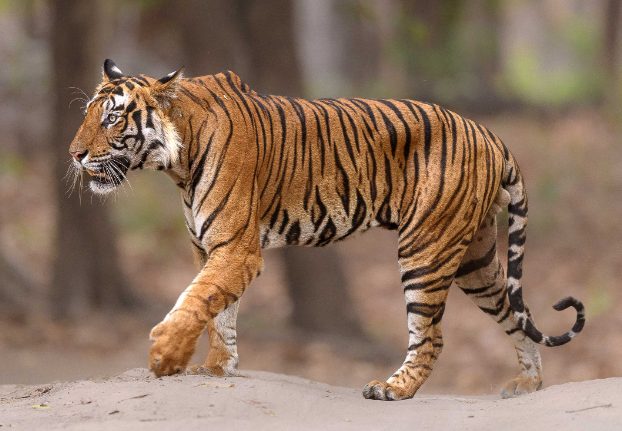The Bengal Indian tiger, a majestic and iconic species, is vital to the ecosystem and culture of India. With their striking appearance and powerful presence, Bengal tigers captivate wildlife enthusiasts and conservationists alike. Understanding their habitat, behavior, and the threats they face is crucial for ensuring their survival in the wild.
Habitat and Range of the Bengal Tiger
Bengal tigers primarily inhabit the forests, grasslands, and mangroves of India, and they also extend into Bangladesh, Nepal, and Bhutan. Their preferred habitats include tropical and subtropical moist broadleaf forests, where they can find ample prey like deer and wild boar. The Sundarbans, a vast delta in India and Bangladesh, is home to a unique population of Bengal tigers adapted to a mangrove environment. Understanding the specific needs of their habitats is essential for the conservation efforts aimed at protecting this endangered species.
Behavior and Social Structure
Bengal tigers are solitary animals, known for their stealth and agility. They are generally nocturnal, hunting primarily at night, which allows them to utilize their keen senses effectively. These tigers are territorial and mark their ranges with scent markings to communicate with others. While they are solitary creatures, a mother may stay with her cubs for up to two years, teaching them essential survival skills. Learning about their behavior can help us appreciate the complexities of their existence and the importance of preserving their natural environments.
Threats and Conservation Efforts
Despite their status as a national symbol and apex predators, Bengal tigers face numerous threats, including habitat loss, poaching, and human-wildlife conflict. Deforestation for agriculture and urban development severely impacts their habitats, leading to a decline in prey availability. To combat these challenges, various conservation programs focus on habitat restoration, anti-poaching initiatives, and educating local communities about the ecological importance of tigers. Organizations like the World Wildlife Fund (WWF) and Wildlife Protection Society of India work tirelessly to promote awareness and facilitate conservation efforts. Protecting the Bengal tiger is not just about saving a species; it’s about maintaining the biodiversity of entire ecosystems.
In conclusion, the Bengal Indian tiger is a remarkable creature emblematic of wildlife conservation efforts. By educating ourselves about their habitats, behaviors, and the threats they face, we can contribute to preserving this magnificent species for future generations. Let’s take a moment to reflect on how we can help protect the Bengal tiger—whether through supporting conservation organizations or spreading awareness about their plight. Every effort counts in ensuring a sustainable future for these incredible animals.

